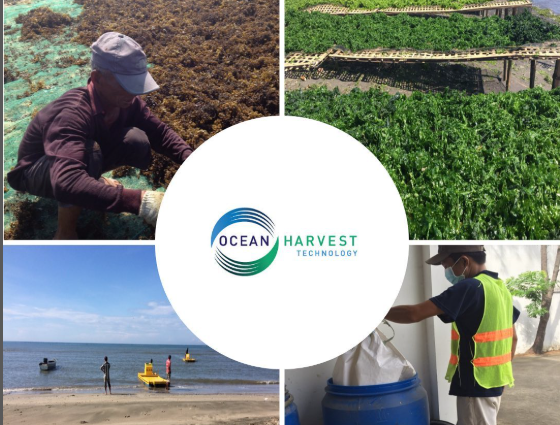The share price of Ocean Harvest Technology has been stagnant at 1.00 GBX in recent days, concealing a sharp decline of 93.44% over the previous 12 months. It appears to be a warning story at first glance. However, beneath that dramatic downturn is a story that is still remarkably incomplete. Some investors see this downturn as a warning sign, but others see it as an opportunity for a forward-thinking company to weather an early storm and eventually emerge stronger.
Ocean Harvest Technology was founded with the particularly creative goal of replacing synthetic enhancers with nutrient-rich seaweed blends that support growth, immunity, and gut health in livestock and aquaculture. The company was established to serve a surprisingly complex market—natural additives for animal feed. These customized blends, which are aimed at everything from equestrian diets to salmon farms, demonstrate an ecosystem-first mentality in addition to scientific curiosity.
Ocean Harvest Technology Group – Company Overview
| Attribute | Details |
|---|---|
| Company Name | Ocean Harvest Technology Group PLC |
| Ticker Symbol | OHT:LSE |
| Sector | Consumer Staples – Food Producers |
| Current Share Price | 1.00 GBX (as of May 19, 2025) |
| 1-Year Price Change | -93.44% |
| Headquarters | United Kingdom |
| Product Focus | Seaweed-based functional additives for animal feed |
| Key Product Lines | OceanFeed Bovine, Poultry, Swine, Aqua, Equine, Pet |
| Product Formats | Powder, Meal, Pellet, Crumble |
| Manufacturing Base | Vietnam |
| Global Sourcing | Multiple seaweed markets worldwide |
| Primary Customers | Livestock, aquaculture, and pet nutrition industries |
| Official Website | www.oceanharvesttechnology.com |
A Deeper Undercurrent or a Current Bump?
Ocean Harvest’s current valuation is not wholly surprising given the rising cost of production and the waning sentiment toward agri-tech. Investors are more wary, especially of businesses that are still building out their infrastructure. Additionally, although its manufacturing facility in Vietnam provides easy access to raw materials, global sourcing logistics may have resulted in erratic schedules and higher-than-anticipated costs. These kinds of growing pains are remarkably similar for startups navigating international trade.
The company’s intellectual edge, however, has not diminished. Farmers aiming to reduce antibiotic use and boost conversion rates can benefit from the environmental and performance advantages of its exclusive OceanFeed line. In salmon and shrimp farming, where disease risk is high and profit margins are narrow, products such as OceanFeed Aqua provide a viable, sustainable substitute for synthetic additives.
Getting Started in the Seaweed Renaissance
Seaweed has transformed from a niche curiosity to an agricultural darling in the last ten years. Ocean Harvest positioned itself within a significantly enhanced value chain by utilizing its regenerative attributes, which include carbon absorption, fast growth cycles, and zero fresh water use. These days, timing, execution, and investor narrative are more important than product-market fit. Perception frequently lags behind innovation in the field of sustainable agri-tech.
The company’s mission still resonates with institutional funds that have ESG mandates. Ocean Harvest could expand its reach without experiencing significant operational drag by forming strategic alliances, possibly with bigger feed producers or biotech accelerators. This makes the business model very adaptable, particularly if licensing is taken into consideration.
A Strategic Reset, Not the End of the Story
Ocean Harvest is headed for a leaner, smarter future by diversifying its manufacturing and refocusing on a smaller number of high-margin segments. The company could restore market confidence and demonstrate that its current price is more of an opportunity than a judgment by improving investor communication and operational transparency.
Ocean Harvest’s product line may prove especially advantageous in the upcoming years as regulatory frameworks change to support low-carbon, antibiotic-free farming, both in terms of functionality and compliance. Early adopters of sustainable additives are in a position to lead, not follow, as European and Asian regulators are already tightening controls.
Making the Most of Adversity
Ocean Harvest’s fundamentals present a different picture than its share price, which presents a bleak picture. Years of research, performance tests, and anecdotal successes from farms around the world support the company’s seaweed blends. Investor confidence is lacking, but even a slight increase in contract wins or market expansion can quickly restore it.
The business may be able to achieve cost-effective and scalable operational improvements by incorporating AI technologies into their supply chain. Additionally, they can reposition themselves in a way that appeals to investors and consumers alike by emphasizing storytelling in a way that links seaweed to both performance and climate action.


